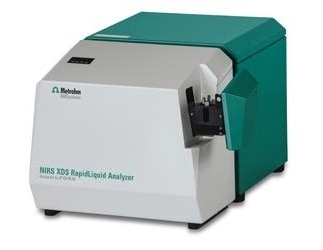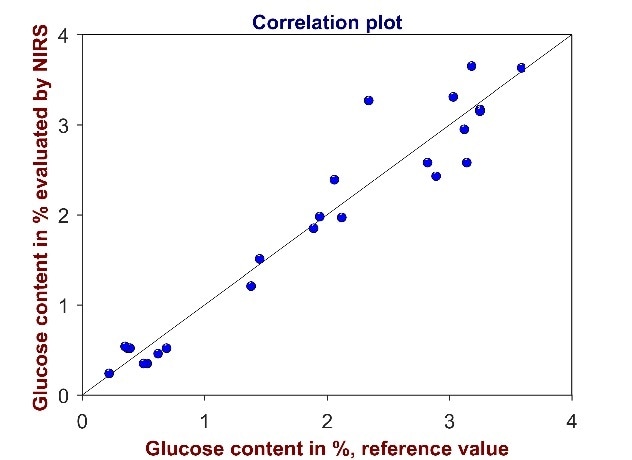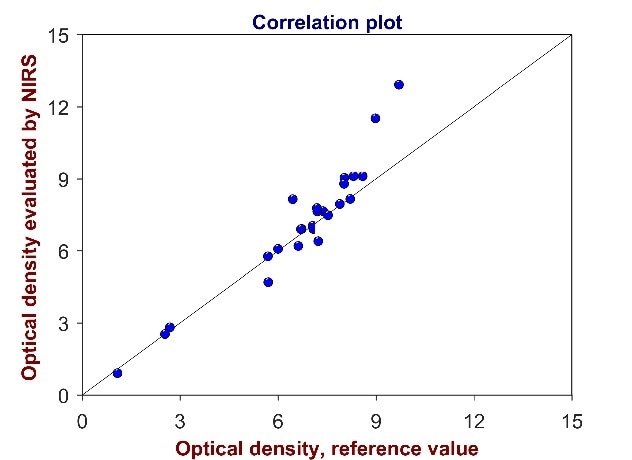Xanthan gum is a natural polysaccharide that is used for a variety of purposes within the cosmetic and pharmaceutical industries. The presence of even miniscule amounts in water in xanthan gum products can dramatically increase the viscosity of a solution, which accounts for the use of xanthan gum as a natural thickener in different personal care products including lotions, shampoos, liquid soaps or toothpaste.
Furthermore, the addition of xanthan gum for such purposes also prevents the separation of emulsions, assists in the suspension of solid particles and can also be utilized as an excipient within the pharmaceutical industry.
When used in these industries, it is imperative to determine the optical density and concentrations of xanthan gum within products, as well as evaluate the possible presence of impurities, such as glucose. The following experimental data and results demonstrate the efficacy of Vis-NIR spectroscopy to perform the investigation of these parameters in less than one minute without requiring any sample preparation.
Experimental Data
To evaluate the efficacy of utilizing Vis-NIR spectroscopy for the analysis of xanthan gum solutions, a set over 100 customer samples were collected from more than 20 different fermenters within a 4-week time period. Near-infrared spectra were acquired using Metrohm XDS RapidLiquid Analyzer.
The samples were placed in 4 mm disposable glass vials and measured in transmission mode over the full Vis-NIR wavelength range of 400– 2500 nm at a temperature that was maintained at 40 °C. The software package Vision Air 2.0 Complete was used for the acquisition and management of data, as well as for the development of the quantification method.
75% of samples in this study were used for the calibration, whereas the remaining 25% of samples were used for the validation. The spectra were pre-treated using 2nd derivative. A Partial Least Squares Regression (PLS) or Multiple Linear Regression (MLR) was performed over the specific spectral regions.
Table 1. Used equipment and software.
| Equipment |
Metrohm order code |
| NIRS XDS RapidLiquid Analyzer |
2.921.1410 |
| NIRS 4 mm disposable glass vials |
6.7402.010 |
| Vision Air 2.0 Complete |
6.6072.208 |

Figure 1. The NIRS XDS RapidLiquid Analyzer was used for spectral data acquisition over the full range from 400 nm to 2500 nm.
Results
The correlation plots show a high correlation between the parameters determined by the reference analytical method, as shown in the x-axis, and the predicted values, as shown in the y-axis, from Vis-NIR spectroscopy. The good correlation results are confirmed by the high determination coefficients and particularly low standard errors of calibration, cross- validation and prediction as determined by SEC, SECV and SEP, respectively.
Table 2. Results of the quantitative method development for glucose.
| . |
. |
| Concentration range |
0–4.5% |
| Method |
PLS |
| Number of factors |
5 |
| Wavelength range |
626–694 and 1662–1744 nm |
| Pretreatment |
2nd derivative |
| SEC |
0.26% |
| SECV |
0.28% |
| SEP |
0.34% |
| R² |
0.9623 |

Figure 2. Validation of the method for the determination of glucose content. The correlation plot shows reference values versus glucose values evaluated by Vis-NIR spectroscopy. High coefficient of determination (R² = 0.9623) and low standard error of prediction (SEP = 0.34%) demonstrate that the method is suitable for its intended use.
Table 3. Results of the quantitative method development for xanthan.
| . |
. |
| Concentration range |
0–5% |
| Method |
PLS |
| Number of factors |
4 |
| Wavelength range |
1662–1744 nm |
| Pretreatment |
2nd derivative |
| SEC |
0.19% |
| SECV |
0.20% |
| SEP |
0.35% |
| R² |
0.9431 |

Figure 3. Validation of the method for the determination of xanthan gum content. The correlation plot shows reference values versus xanthan gum values evaluated by Vis-NIR spectroscopy. High coefficient of determination (R² = 0.9431) and low standard error of prediction (SEP = 0.35%) demonstrate that the method is suitable for its intended use.
Table 4. Results of the quantitative method development for optical density.
| . |
. |
| Concentration range |
0–12 |
| Method |
MLR |
| Wavelength |
893 and 967 nm |
| Pretreatment |
2nd derivative |
| SEC |
0.63 |
| SECV |
0.71 |
| SEP |
0.90 |
| R² |
0.9052 |

Figure 4. Validation of the method for the determination of optical density. The correlation plot shows reference values versus optical density values evaluated by Vis-NIR spectroscopy. High coefficient of determination (R² = 0.9052) and low standard error of prediction (SEP = 0.90) demonstrate that the method is suitable for its intended use.
Conclusion
The Metrohm NIRS XDS RapidLiquid Analyzer has been shown to be a feasible tool to evaluate the presence of glucose and xanthan gum concentrations, as well as the optical density in aqueous xanthan gum solutions.
The calibration models of the Vis-NIR method provide the user with results that exhibit acceptable standard errors and accuracy. Vis-NIR spectroscopy is therefore a suitable high throughput quality control analysis method that can be used during the production of aqueous xanthan gum solutions.
By combining this technique with the use of the intuitive Vision Air Software, this approach saves a great deal of time and related costs that are associated with the analysis of aqueous xanthan gum solutions.
About Metrohm
At Metrohm is one of the world’s most trusted manufacturers of high-precision instruments for chemical analysis. Metrohm was founded in 1943 by engineer Bertold Suhner in Herisau, Switzerland. Today, Metrohm is represented in 120 countries by subsidiaries and exclusive distributors. The global Metrohm Group also includes the Dutch companies Metrohm Applikon and Metrohm Autolab, manufacturers of online analyzers and instruments for electrochemical research, respectively. Recently, the Metrohm Group was joined by Metrohm Raman, a leading manufacturer of handheld Raman spectrometers.
Metrohm is the global market leader in analytical instruments for titration. Instruments for ion chromatography, voltammetry, conductivity, and stability measurement make the Metrohm portfolio for ion analysis complete. Instruments for Near-infrared and Raman spectroscopy are another, strongly growing segment of the Metrohm portfolio.
Metrohm is a problem solver, both in the laboratory and within the industrial process. To this end, the company offers their customers complete solutions, including dedicated analytical instrumentation as well as comprehensive application know-how. More than 30% of the company’s employees at the Metrohm international headquarters in Herisau work in R&D.
Metrohm has been owned 100% by the non-profit Metrohm Foundation since 1982. The Metrohm Foundation, which does not exert any influence on the company’s business operations, sponsors gifted students in the natural sciences, supports charitable and philanthropic purposes and, above all, ensures the independence of the company.
Sponsored Content Policy: News-Medical.net publishes articles and related content that may be derived from sources where we have existing commercial relationships, provided such content adds value to the core editorial ethos of News-Medical.Net which is to educate and inform site visitors interested in medical research, science, medical devices and treatments.